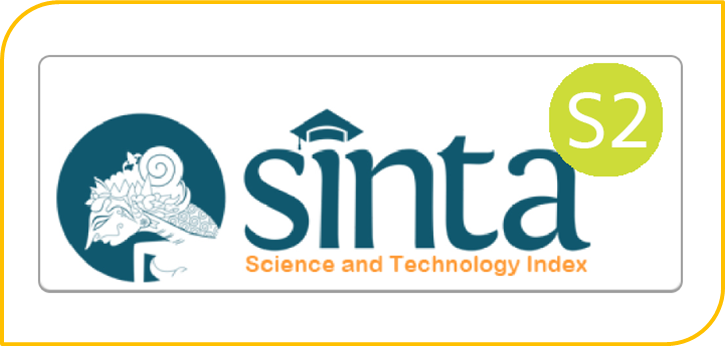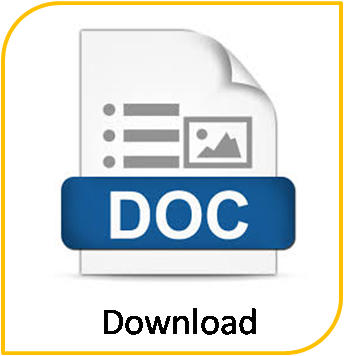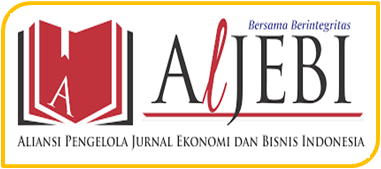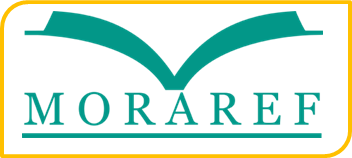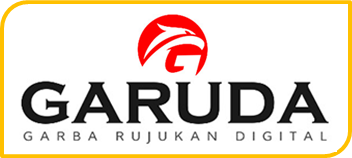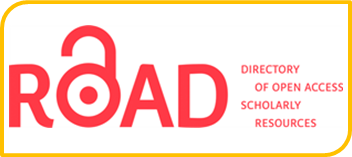THE CONTRIBUTION OF ISLAMIC CAPITAL MARKET AND ISLAMIC INSURANCE TO INCLUSIVE ECONOMIC DEVELOPMENT IN INDONESIA
Abstract
The study aims to identify the contribution of some Islamic financial instruments from Islamic capital markets and Islamic non-bank financial institutions to inclusive economic development in Indonesia. While some studies have examined the contribution of some Islamic financial instruments to a single measure of economic indicators, this study tries to fill the gap in the context of multi indicators to explain economic development, so the authors propose an inclusive economic development index that consists of 21 indicators. This study employed a quantitative research method using secondary data from 2011-2020 from several sources (Financial Service Authority, the Ministry of Finance Republic Indonesia, and the Ministry of National Development Planning (BAPPENAS)). The main variables used are the Jakarta Islamic Index (JII) market capitalization, total outstanding Sukuk, Islamic insurance total claim, and inclusive economic development index. The research data is analyzed using multiple regression linear models. The result found that only the total outstanding Sukuk significantly impacted inclusive economic development. In contrast, the others variables are insignificant.
Keywords
Full Text:
PDFReferences
Alirzayev, A., Shamkhalova, S., & Abdulov, A. (2020). The impact of non-banking credit organization credits on economic growth in Azerbaijan. Research in World Economy, 11(5), 334–340. https://doi.org/10.5430/RWE.V11N5P334
Archer, S. (2018). Sukuk – Unlocking the Potential for, 48–70.
Asongu, S. A., Amavilah, V. H. S., & Andrrs, A. R. (2014). Economic Implications of Business Dynamics for KE-Associated Economic Growth and Inclusive Development in African Countries. SSRN Electronic Journal, 1–45. https://doi.org/10.2139/ssrn.2538318
Auliyatussaa’dah, N., Handayani, D. I., & Farekha. (2021). Pengaruh Saham dan Reksadana Syariah Terhadap Pertumbuhan Ekonomi Indonesia Tahun 2013-2019. Journal of Islamics and Finance, 1(1), 37–45.
BAPPENAS. (2016). Masterplan Arsitektur Keuangan Syariah Indonesia. Kementerian Perencanaan Pembangunan Nasional (PPN/BAPPENAS) Republik Indonesia. Retrieved from https://www.bappenas.go.id/files/publikasi_utama/Masterplan Arsitektur Keuangan Syariah Indonesia.pdf
Beik, I. S. (2011). Memperkuat Pran Sukuk Negara Dalam Pembangunan Ekonomi Indonesia. Jurnal Ekonomi Islam Al-Infaq, 2(2), 65–72.
Ben Jedidia Khoutem, D. (2014). Islamic banks-Sukuk markets relationships and economic development: The case of the Tunisian post-revolution economy. Journal of Islamic Accounting and Business Research, 5(1), 47–60. https://doi.org/10.1108/JIABR-07-2012-0054
Cabeza-García, L., Del Brio, E. B., & Oscanoa-Victorio, M. L. (2019). Female financial inclusion and its impacts on inclusive economic development. Women's Studies International Forum, 77(October), 102300. https://doi.org/10.1016/j.wsif.2019.102300
Caporale, G. M., & Helmi, M. H. (2018). Islamic banking, credit, and economic growth: Some empirical evidence. International Journal of Finance and Economics, 23(4), 456–477. https://doi.org/10.1002/ijfe.1632
Chistik, O. F., & Eliseev, V. A. (2019). The Index of Inclusive Development in Formation of the New Concept of Economic Growth. SHS Web of Conferences, 62, 05002. https://doi.org/10.1051/shsconf/20196205002
Cholifihani, M. (2019). Pengembangan Ekonomi dan Keuangan Syariah Dalam Rencana Kerja Pemerintah. Retrieved from https://knks.go.id/storage/upload/1566529692-Ekonomi Syariah dalam RJP Bappenas.pdf
Coşkun, Y., Seven, Ü., Ertuğrul, H. M., & Ulussever, T. (2017). Capital market and economic growth nexus: Evidence from Turkey. Central Bank Review, 17(1), 19–29. https://doi.org/10.1016/j.cbrev.2017.02.003
Fauzan, M., & Suhendro, D. (2018). Peran Pasar Modal Syariah Dalam mendorong Laju Pertumbuhan Ekonomi Di Indonesia. Khazanah Multidisiplin, 5(2), 1–27.
Gudarzi Farahani, Y., & Dastan, M. (2013). Analysis of Islamic banks' financing and economic growth: a panel cointegration approach. International Journal of Islamic and Middle Eastern Finance and Management, 6(2), 156–172. https://doi.org/10.1108/17538391311329842
Hachicha, Nejib and Amar, A. Ben. (2015). Does Islamic Bank Financing Contribute to Economic Growth? The Malaysian Case. International Journal of Islamic and Middle Eastern Finance and Management, 8(3), 349–368. https://doi.org/10.1108/mf.2008.00934jaa.001
Hapsari, W. R. (2019). Analisis Pertumbuhan Ekonomi Inklusif Kabupaten/Kota Di Provinsi Jawa Tengah. Jurnal Litbang Sukowati : Media Penelitian Dan Pengembangan, 3(1), 11. https://doi.org/10.32630/sukowati.v3i1.121
Hastuti, E. S. (2017). Sukuk Tabungan : Investasi Syariah Pendorong Pembangunan Ekonomi Inklusif. Jurnal Jurisprudence, 7(2), 114–122. https://doi.org/10.23917/jurisprudence.v7i2.4096
Inklusif.bappenas.go.id. (n.d.). Indeks Pembangunan Ekonomi Inklusif.
Iswadi, M. (2015). Asuransi Islami Dan Pembangunan Ekonomi Umat. Al-Tijary Jurnal Ekonomi Dan Bisnis Islam, 1(1), 47–56. https://doi.org/10.21093/at.v1i1.421
Kartini, E., & Milawati, M. (2020). How Sukuk and Conventional Bond Affect Economic Growth? Evidence From Indonesia. International Journal of Economics and Financial Issues, 10(5), 77–83. https://doi.org/10.32479/ijefi.10223
Ledhem, M. A. (2020). Does Sukuk financing boost economic growth? Empirical evidence from Southeast Asia. PSU Research Review, ahead-of-p(ahead-of-print). https://doi.org/10.1108/prr-09-2020-0028
Loaba, S., & Zahonogo, P. (2019). Effects of information sharing on banking credit and economic growth in developing countries: Evidence from the West African Economic and Monetary Union. International Journal of Finance and Economics, 24(3), 1079–1090. https://doi.org/10.1002/ijfe.1706
M. Anwar, S., Junaidi, J., Salju, S., Wicaksono, R., & Mispiyanti, M. (2020). Islamic bank contribution to Indonesian economic growth. International Journal of Islamic and Middle Eastern Finance and Management, 13(3), 519–532. https://doi.org/10.1108/IMEFM-02-2018-0071
Malikov, A. (2017). How Do Sovereign Sukuk Impact on the Economic Growth of Developing Countries? An Analysis of the Infrastructure Sector. Critical Issues and Challenges in Islamic Economics and Finance Development. https://doi.org/10.1007/978-3-319-45029-2
Paulus, C. A., Azmanajaya, E., Pellokila, M. R., & Paranoan, N. (2020). Prospective strategies for sustainable local economic development in support of the SDGs' goals "inclusive and sustainable economic growth" in the border region of Indonesia-Timor Leste, Belu Regency, East Nusa Tenggara Province, Indonesia. Journal of Physics: Conference Series, 1464(1). https://doi.org/10.1088/1742-6596/1464/1/012053
Prada, A., & Sánchez-Fernández, P. (2019). Transforming Economic Growth into Inclusive Development: An International Analysis. Social Indicators Research, 145(1), 437–457. https://doi.org/10.1007/s11205-019-02096-x
Prodius, O. (2020). the Inclusive Development Concept As a Modern Paradigm for Intensification of Implementation of Innovations. Three Seas Economic Journal, 1(1), 60–65. https://doi.org/10.30525/2661-5150/2020-1-10
Ramírez Guerra, E. A. (2017). The economic growth and the banking credit in Mexico: Granger causality and short-term effects, 2001Q1 – 2016Q4. Economía Informa, 406, 46–58. https://doi.org/10.1016/j.ecin.2017.10.004
Rawat, A. S., & Mehdi, S. K. (2017). The Impact of Islamic Banks and Takaful Companies on Economic Growth: A Case of Pakistan. Journal of Finance & Economics Research, 2(2), 130–143. https://doi.org/10.20547/jfer1702203
Sari, N., Syamsurijal, & Widiyanti, M. (2018). the Impact of Islamic Capital Market Development on Economic Growth: the Case of Indonesia. Journal of Smart Economic Growth, 3(2), 21–30.
Sawadogo, R., Guerineau, S., & Ouedraogo, I. M. (2018). Life insurance development and economic growth: Evidence from developing countries. Journal of Economic Development, 43(2), 1–28. https://doi.org/10.35866/caujed.2018.43.2.001
Shetty, S. L., Reforms, E., & Doctrines, N. (2020). Issues and Challenges of Inclusive Development. Issues and Challenges of Inclusive Development. Springer Singapore. https://doi.org/10.1007/978-981-15-2229-1
Sihaloho, H. (2015). Produk Domestik Regional Bruto Per Kapita Dan Pembangunan Ekonomi Yang Inklusif Dan Berkeadilan Di Kabupaten Toba Samosir. Jurnal Manajemen Dan Bisnis, 15(1), 10–19.
Smaoui, H., & Khawaja, M. (2017). The Determinants of Sukuk Market Development. Emerging Markets Finance and Trade, 53(7), 1501–1518. https://doi.org/10.1080/1540496X.2016.1224175
Smaoui, H., & Nechi, S. (2017). Does sukuk market development spur economic growth? Research in International Business and Finance, 41(February), 136–147. https://doi.org/10.1016/j.ribaf.2017.04.018
Soekarwo. (2018). JATIMNOMICs: A Model of Indonesia Incorporated for Free Trade and Inclusive Economic Growth, (2), 47–60. https://doi.org/10.1142/9789813226913_0002
Soemitra, A. (2014). MASA DEPAN PASAR MODAL SYARIAH DI INDONESIA (1st ed.). Jakarta: Prenadamedia Group.
Tan, Y.-L., & Mohamad Shafi, R. (2021). Capital market and economic growth in Malaysia: the role of ṣukūk and other sub-components . ISRA International Journal of Islamic Finance, ahead-of-p(ahead-of-print), 102–117. https://doi.org/10.1108/ijif-04-2019-0066
Taqwa, Khoirul Zadid & Sukmana, R. (2018). Analisis Kinerja Sistem Keuangan Syariah Terhadap Pertumbuhan Ekonomi Indonesia. Jurnal Ekonomi Syariah Teori Dan Terapan, 5(5), 393–404.
Ul Din, S. M., Abu-Bakar, A., & Regupathi, A. (2017). Does insurance promote economic growth: A comparative study of developed and emerging/ developing economies. Cogent Economics and Finance, 5(1). https://doi.org/10.1080/23322039.2017.1390029
Yıldırım, S., Yıldırım, D. C., & Diboglu, P. (2020). Does Sukuk market development promote economic growth? PSU Research Review, 4(3), 209–218. https://doi.org/10.1108/PRR-03-2020-0011
DOI: https://doi.org/10.18860/ed.v11i1.15973
Refbacks
- There are currently no refbacks.
Editorial Office:
Megawati Soekarnoputri Building
Faculty of Economics
E-mail: eldinar@uin-malang.ac.id
Universitas Islam Negeri Maulana Malik Ibrahim Malang
E-ISSN 2622-0083

El Dinar under a CC BY SA 4.0 International License.
Member of:
Indexed By:

